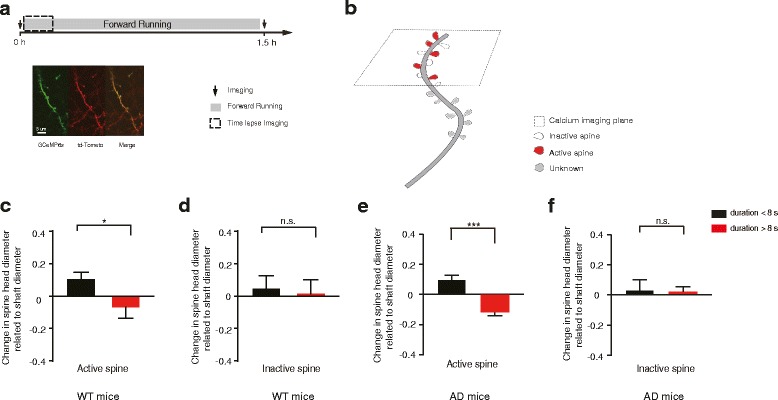Fig. 6.

Dendritic calcium transients with abnormal long-durations reduce dendritic spine size in APP/PS1 mice. a. Schematic of experimental design and imaging spine structure and calcium transients. Top, time course of imaging and treadmill running. Bottom, images of dendrites labeled with GCaMP6s (green) and Td-tomato (red). b. Schematic showing inactive (blank) and active (red) spines on the calcium imaging plane. c-d. Size change of active (c) and inactive (d) spines on dendrites with short and prolonged dendritic calcium transients in WT mice (active spine number: duration <8 s, n = 33 and duration >8 s, n = 10; inactive spine number: duration <8 s, n = 9 and duration >8 s, n = 5. Wilcoxon signed rank test). e-f. Size change of active (e) and inactive (f) spines on dendrites with short and prolonged dendritic calcium transients in APP/PS1 mice (active spine number: duration <8 s, n = 30 and duration >8 s, n = 13; inactive spine number: duration <8 s, n = 15 and duration >8 s, n = 11. Wilcoxon signed rank test). Data are mean ± s.e.m. ***P < 0.001. n.s., not significant
